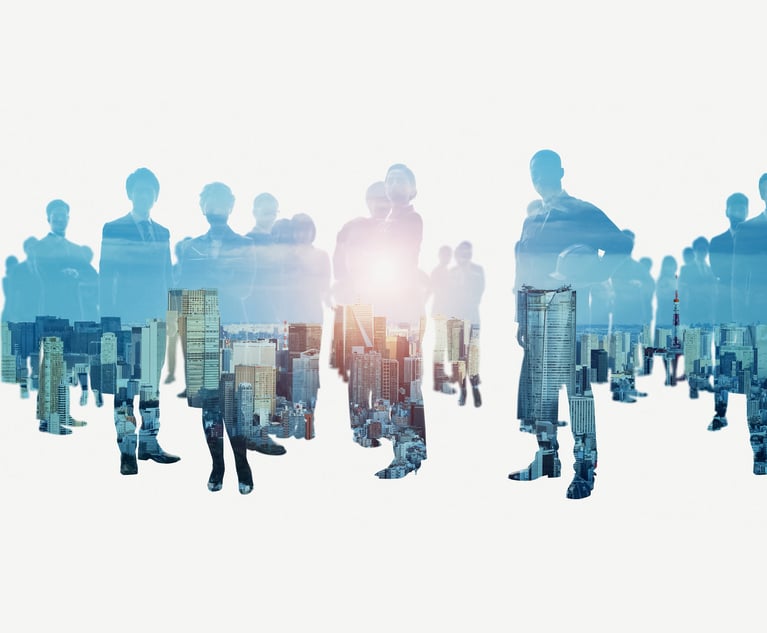Replacing In-Person With Virtual Litigation—Can It Work Regardless of Weaknesses?
With the pandemic having made in-person meetings or gatherings dangerous, digital tools built to satisfy all of the needs of persons to conduct business, have discussions and otherwise take the steps which comprise litigation were, at times, put into place to substitute those tools for the in-person gatherings through which litigation had traditionally been conducted.
October 01, 2020 at 01:31 PM
8 minute read
 Leonard Deutchman
Leonard Deutchman As almost all of us are well aware, the pandemic has caused jurisdictions throughout the country and the rest of the world to halt or change radically criminal and civil proceedings. Afraid that the aggregation of parties, judges and judicial personnel, litigators, witnesses, prospective and actual jurors (trial and grand jurors both) in a courthouse that has not taken all steps to prevent the spread of the pandemic, e.g., have all persons take vaccines to prevent those persons from contracting the disease, test all persons for the presence of the pandemic, set up and police social distancing steps (such as glass or see-through plastic walls between sections of the courtroom that will prevent persons with the disease spread it by talking, coughing and so on), etc., will lead to that spread, courthouses throughout the country have shut down, defendants and ostensible victims have had their lives put on hold, and the situation worsens as each day more suits are filed, arrests made, and so on.
In my hometown of Philadelphia—and, I expect, most places—when in-person litigation shut down as the virus spread until it came to be thought of as a pandemic, personnel affected by the shutdowns have been planning to overcome the resultant problems in two ways: open the closed centers of litigation to allow in appropriate personnel; or, use web-based digital communications devices to recreate the personal interactions of which litigation is comprised. As each solution is developed, developers run into problem after problem. In this month's article, we will discuss whether either solution will work and, if not, why not.
This content has been archived. It is available through our partners, LexisNexis® and Bloomberg Law.
To view this content, please continue to their sites.
Not a Lexis Subscriber?
Subscribe Now
Not a Bloomberg Law Subscriber?
Subscribe Now
NOT FOR REPRINT
© 2025 ALM Global, LLC, All Rights Reserved. Request academic re-use from www.copyright.com. All other uses, submit a request to [email protected]. For more information visit Asset & Logo Licensing.
You Might Like
View All
Patent Pending ... and Pending ... and Pending? Brace Yourself for Longer Waits
3 minute read

How Some Elite Law Firms Are Growing Equity Partner Ranks Faster Than Others
4 minute readTrending Stories
Who Got The Work
J. Brugh Lower of Gibbons has entered an appearance for industrial equipment supplier Devco Corporation in a pending trademark infringement lawsuit. The suit, accusing the defendant of selling knock-off Graco products, was filed Dec. 18 in New Jersey District Court by Rivkin Radler on behalf of Graco Inc. and Graco Minnesota. The case, assigned to U.S. District Judge Zahid N. Quraishi, is 3:24-cv-11294, Graco Inc. et al v. Devco Corporation.
Who Got The Work
Rebecca Maller-Stein and Kent A. Yalowitz of Arnold & Porter Kaye Scholer have entered their appearances for Hanaco Venture Capital and its executives, Lior Prosor and David Frankel, in a pending securities lawsuit. The action, filed on Dec. 24 in New York Southern District Court by Zell, Aron & Co. on behalf of Goldeneye Advisors, accuses the defendants of negligently and fraudulently managing the plaintiff's $1 million investment. The case, assigned to U.S. District Judge Vernon S. Broderick, is 1:24-cv-09918, Goldeneye Advisors, LLC v. Hanaco Venture Capital, Ltd. et al.
Who Got The Work
Attorneys from A&O Shearman has stepped in as defense counsel for Toronto-Dominion Bank and other defendants in a pending securities class action. The suit, filed Dec. 11 in New York Southern District Court by Bleichmar Fonti & Auld, accuses the defendants of concealing the bank's 'pervasive' deficiencies in regards to its compliance with the Bank Secrecy Act and the quality of its anti-money laundering controls. The case, assigned to U.S. District Judge Arun Subramanian, is 1:24-cv-09445, Gonzalez v. The Toronto-Dominion Bank et al.
Who Got The Work
Crown Castle International, a Pennsylvania company providing shared communications infrastructure, has turned to Luke D. Wolf of Gordon Rees Scully Mansukhani to fend off a pending breach-of-contract lawsuit. The court action, filed Nov. 25 in Michigan Eastern District Court by Hooper Hathaway PC on behalf of The Town Residences LLC, accuses Crown Castle of failing to transfer approximately $30,000 in utility payments from T-Mobile in breach of a roof-top lease and assignment agreement. The case, assigned to U.S. District Judge Susan K. Declercq, is 2:24-cv-13131, The Town Residences LLC v. T-Mobile US, Inc. et al.
Who Got The Work
Wilfred P. Coronato and Daniel M. Schwartz of McCarter & English have stepped in as defense counsel to Electrolux Home Products Inc. in a pending product liability lawsuit. The court action, filed Nov. 26 in New York Eastern District Court by Poulos Lopiccolo PC and Nagel Rice LLP on behalf of David Stern, alleges that the defendant's refrigerators’ drawers and shelving repeatedly break and fall apart within months after purchase. The case, assigned to U.S. District Judge Joan M. Azrack, is 2:24-cv-08204, Stern v. Electrolux Home Products, Inc.
Featured Firms
Law Offices of Gary Martin Hays & Associates, P.C.
(470) 294-1674
Law Offices of Mark E. Salomone
(857) 444-6468
Smith & Hassler
(713) 739-1250






